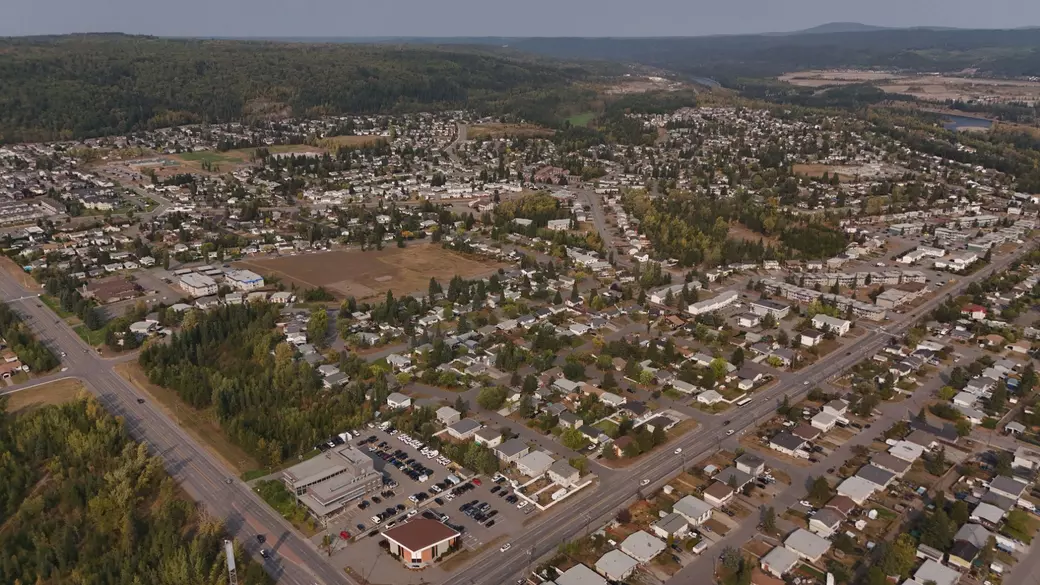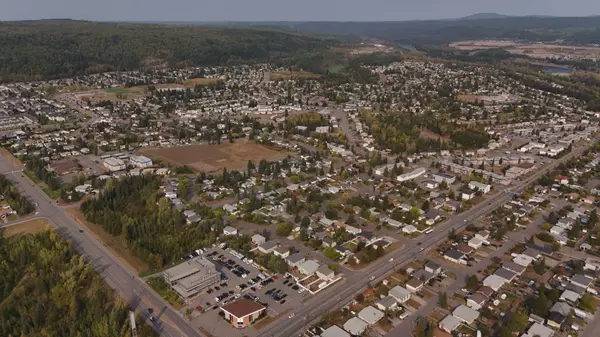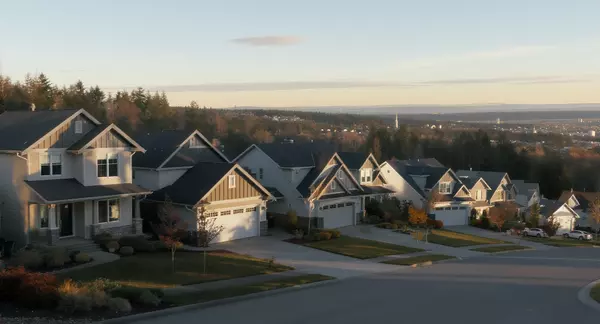What’s It Really Like Living in Heritage, Prince George, BC? (Neighborhood Guide 2025-2026)

-
Short answer: quiet, spacious, park-rich, and very family-friendly—with the trade-off that you’ll drive for most errands. Below is the full picture in an easy, skimmable listicle you can actually use.
1) Vibe Check: What Does Heritage Feel Like?
- Calm + residential by design. Streets are quiet, noise is low, and most homes are classic mid-century suburban builds on large lots with fenced yards and sundecks—ideal for kids and pets.
- “Highly sought-after.” Community descriptions consistently rate Heritage as safe, nice, and family-oriented; locals mention multiple daycares on residential streets.
- Why it’s so stable: Most of the housing stock was built in the 1960s–1980s, so the family-friendly feel isn’t a phase—it’s baked into the planning (single-detached homes, car-centric streets, privacy).
Deep Dive
Heritage reads calm the moment you turn in—low ambient noise, gentle traffic, and that classic suburban rhythm built for everyday family life. Locals consistently describe it as highly sought-after, safe, and family-oriented, a reputation that’s easy to feel on a casual evening walk.
The quiet isn’t accidental. Most of the neighborhood was built through the 1960s–1980s, so the planning DNA favors detached homes, privacy, and cul-de-sac streets. That era shows up in larger lots, fenced backyards, and sundecks—little ecosystems for BBQs, kid play, and weekend tinkering—which collectively produce a relaxed, residential vibe rather than urban bustle.
You can see the family density in small, everyday signals: residents mention multiple daycares right on residential streets, a shorthand for strollers, scooters, and neighbors who look out for one another. The broader city profile reinforces that feel; Prince George skews younger than the BC average with a healthy share of children and a strong working-age population, which feeds directly into Heritage’s lived experience.
Another reason the area stays vibrant is turnover. As original owners age out, younger families are buying in, keeping the streets lively and preventing the neighborhood from drifting into a seniors-only enclave. Some locals compare its comfort to College Heights, with a sprinkle of newer development that keeps things fresh without losing the established feel. Green edges amplify the calm; adjacency to Moore’s Meadows and the surrounding greenbelt puts nature-adjacent walks right into the daily routine.
Day-to-day life follows a predictable, friendly cadence: school drop-offs and quick car commutes in the morning, dogs on leashes in the afternoon, and unhurried loops through nearby trails after dinner. Weekends lean into yard work, bikes, and informal park meetups—community without commotion. That mix of safety, space, and easy access to green places is the heart of why Heritage wins hearts and stays in demand.
2) Is It Family-Friendly? (Schools, Safety, Day-to-Day)
- Schools in reach:
- Heritage Elementary sits inside the neighborhood (257 Anderson St).
- High school pathways typically route to DP Todd Secondary.
- Parks everywhere: You’ll have fast access to ~10 public green spaces plus a big-nature vibe next door.
- Community profile supports families: Prince George skews younger than BC overall (more kids, strong working-age population), which aligns with the lived reality of Heritage.
Deep Dive
Families tend to click with Heritage because the day-to-day logistics line up with what parents want: nearby schools, tons of park space, and streets that feel calm. Heritage Elementary is right in the neighborhood at 257 Anderson Street, while secondary pathways typically route to DP Todd Secondary.That proximity pairs with serious outdoor access: inside Heritage you’ve got Moore’s Meadows Nature Park and Zimmaro Park (playground, field, hoops), and a short drive away, the 9.2-km Heritage River Trail System with benches, picnic areas, seasonal washrooms, and interpretive signage linking to Cottonwood Island Nature Park and Lheidli T’enneh Memorial Park.
On the “feel” side, Heritage is widely described as quiet, safe, and “highly sought-after,” with locals noting lots of families and even daycares on residential streets—a grassroots signal of a kid-centric community. City demographics back that up: Prince George has a higher share of children and a strong working-age core compared with provincial averages, which helps explain the steady flow of young families into established areas like Heritage.
There are two practical trade-offs to plan around. First, errand walkability is low: Local Logic rates Heritage 3.8/10 for walking, and you’ll typically drive to hubs like Spruceland for groceries (Save-On-Foods, Costco, Superstore, Walmart). The flip side is that recreation walkability is high—there’s a web of internal paths connecting homes to parks and schools, so kids can walk or bike for play even if you’re driving for shopping. Second, healthcare access takes forethought: urgent needs are covered at the Prince George UPCC (Parkwood Place), but many family practices aren’t accepting new patients, so newcomers often rely on the UPCC while waiting to be attached to a GP.
Transit is present—Routes 1 and 11 (Heritage) loop through Spruceland but frequencies in the 30–60 minute range make buses a supplement rather than a primary mover for most families or teens. Day to day, expect to drive. The net: Heritage is purpose-built for family life—quiet streets, large yards, walkable play, and school access—if you’re comfortable with a car-centric routine for errands and you plan ahead on primary care.
3) Outdoor Life: Parks, Trails & Weekend Energy
- Inside Heritage:
- Moore’s Meadows Nature Park — huge natural area + trail network.
- Zimmaro Park — playground, open field, basketball court (kid magnet).
- Short Drive City-scale Trail: The 9.2-km Heritage River Trail System (flat, family-friendly) connects to Cottonwood Island Nature Park and Lheidli T’enneh Memorial Park with boat launches, picnic areas, and interpretive signage.
- Day trips: Fort George Canyon & Ancient Forest/Chun T’oh Whudujut for true North-BC adventures.
Deep Dive
If you measure a neighborhood by its green time, Heritage over-delivers. Inside the boundaries you’ve got Moore’s Meadows Nature Park, a sprawling natural area with interlaced paths where evening dog walks and weekend kid-led “adventures” are the norm. A few blocks away, Zimmaro Park anchors the more structured play: a proper playground, open field for pickup soccer, and a basketball court that stays busy after school. In total, you’re within easy reach of roughly ten public green spaces, which means you rarely have to pile into the car just to let the kids burn off energy.
For bigger loops, the Heritage River Trail System ties everything together. It’s a 9.2-km mix of paved and packed-dirt sections, generally flat and stroller-friendly, with thoughtful amenities—benches, picnic tables, seasonal washrooms, boat launches, and interpretive signage that turns a casual ride into a light history lesson. The trail links signature city parks like Cottonwood Island Nature Park (beloved for its tree carvings and riverside feel) and Lheidli T’enneh Memorial Park (water park, gardens, tennis courts, and The Exploration Place museum), so a Saturday can easily flow from bikes to playgrounds to a picnic without ever crossing a major arterial. In winter, parts of the network support cross-country skiing, adding a low-cost cold-weather outlet that keeps families outdoors.
Weekend rhythm here tends to be simple and wholesome: bikes on the driveway, scooters on the sidewalk, and a rotating cast of neighbors heading toward trailheads with coffees in hand. Because parks and schools are interwoven with residential blocks, recreation walkability is high even if errand walkability isn’t; kids can walk or bike to play spaces, and you can loop the dog without planning a car trip. That proximity makes it easier to create everyday routines—“post-dinner loop,” “Saturday park + trail”—that anchor family life and reduce screen time without a big logistical lift.
If you like to range farther on nice days, Heritage is well-positioned for regional gems: Fort George Canyon Park for rugged river views and hikes, or the globally unique inland temperate rainforest at Ancient Forest/Chun T’oh Whudujut Park for boardwalks, towering cedars, and that “wow” factor you get from true North BC. It’s the kind of access that lets you keep weekends varied—local loops when schedules are tight, destination trails when you’ve got time to wander.
Bottom line: Heritage is engineered for easy, frequent outdoor time. From everyday playground hangs and stroller-smooth trail laps to bigger regional outings, the neighborhood’s green assets make it simple to choose fresh air over screens—no complicated planning required.
4) Housing Snapshot: What You’ll Actually Find
- Mostly single-family homes (3–4+ bedrooms) with townhouse pockets (Killoren Court, Heritage Estates, Tabor Estates).
- Owner-occupied majority (~85%). Rental is limited (~15%), but…
- Mortgage helpers are common. Many homes have secondary/basement suites—great for multigenerational living or offsetting the mortgage.
- Recent pricing context: Detached homes approx. $370K–$700K+; townhomes can be lower (e.g., $275K example). (Always check current comps.)
Deep Dive
Heritage is classic single-family suburbia. Most streets are lined with 1960s–1980s builds—split-levels, ranchers, and two-stories—set on large lots with fenced backyards and sundecks. That mid-century wave still defines the look and feel today, giving buyers room to spread out and space for gardens, pets, workshops, and play structures.
While detached homes dominate, there are townhouse options sprinkled through the neighborhood—useful for buyers who want lower maintenance and a gentler entry price. Notable complexes include Killoren Court, Heritage Estates, and Tabor Estates, giving you some variety in layouts and strata styles without having to leave the area.
Ownership is the norm here—about 85% owner-occupied versus roughly 15% rented—which helps the area feel stable and well-kept. A distinctive Heritage feature is the prevalence of secondary/basement suites in detached homes. Listings frequently call out “unauthorized” or well-appointed suites; for owner-occupiers, that can function as a mortgage helper or support multigenerational living. For the neighborhood, suites quietly add rental supply without changing the single-family streetscape. (Always verify local compliance if suite status matters for your financing or insurance.)
On pricing, Heritage spans starter to upscale within the detached category, largely driven by square footage, lot size, era of updates, and presence/quality of a suite. Detached values ranging from about $370K to $700K+, with townhouses notably lower (e.g., a 3-bed/2-bath around $275K+). Use these as historical context and lean on fresh comps when you’re shopping—Heritage can move quickly when a renovated family home with a good yard and suite hits the market.
If you’re comparing “original” versus “updated,” expect trade-offs. Unrenovated homes often deliver bigger lots and value pricing but may need roof, window, furnace, electrical, and kitchen/bath refreshes typical of the era. Renovated homes capture higher prices but reduce near-term maintenance and can be more turnkey for families who want to move, unpack, and head straight to the park. Either way, Heritage’s layouts and lot sizes give you future flexibility—finish a basement, polish a suite, add outdoor living, or just enjoy the elbow room.
Who tends to fit what? First-time buyers often target townhouses or smaller detached homes with cosmetic projects. Growing families gravitate to 3–4+ bed detached with yard depth and school proximity. Investors and house-hackers hunt for suite potential to offset payments. Across all three, the through-line is simple: space, stability, and options—the core reasons Heritage stays in demand.
5) Walkability, Transit & Commuting (The Trade-Off)
- Errand walkability is low. Heritage scores 3.8/10 on Local Logic; groceries on foot are “very rarely possible.” Addresses range from 38/100 (car-dependent) to 64/100 (somewhat walkable) depending on the street.
- Recreation walkability is high. Internal paths link homes to schools and parks; it’s easy to stroll/play—just not to do big errands.
- Transit exists, but it’s supplemental:
- Route 1 (Heritage): clockwise loop to Spruceland Exchange (~hourly).
- Route 11 (Heritage): counter-clockwise to Spruceland (30–60 mins).
Deep Dive
Heritage is classic single-family suburbia. Most streets are lined with 1960s–1980s builds—split-levels, ranchers, and two-stories—set on large lots with fenced backyards and sundecks. That mid-century wave still defines the look and feel today, giving buyers room to spread out and space for gardens, pets, workshops, and play structures.
While detached homes dominate, there are townhouse options sprinkled through the neighborhood—useful for buyers who want lower maintenance and a gentler entry price. Notable complexes include Killoren Court, Heritage Estates, and Tabor Estates, giving you some variety in layouts and strata styles without having to leave the area.
Ownership is the norm here—about 85% owner-occupied versus roughly 15% rented—which helps the area feel stable and well-kept. A distinctive Heritage feature is the prevalence of secondary/basement suites in detached homes. Listings frequently call out “unauthorized” or well-appointed suites; for owner-occupiers, that can function as a mortgage helper or support multigenerational living. For the neighborhood, suites quietly add rental supply without changing the single-family streetscape. (Always verify local compliance if suite status matters for your financing or insurance.)
On pricing, Heritage spans starter to upscale within the detached category, largely driven by square footage, lot size, era of updates, and presence/quality of a suite. Example snapshots show 2022 detached values ranging from about $370K to $700K+, with townhouses notably lower (e.g., a 3-bed/2-bath around $275K+). Use these as historical context and lean on fresh comps when you’re shopping—Heritage can move quickly when a renovated family home with a good yard and suite hits the market.
If you’re comparing “original” versus “updated,” expect trade-offs. Unrenovated homes often deliver bigger lots and value pricing but may need roof, window, furnace, electrical, and kitchen/bath refreshes typical of the era. Renovated homes capture higher prices but reduce near-term maintenance and can be more turnkey for families who want to move, unpack, and head straight to the park. Either way, Heritage’s layouts and lot sizes give you future flexibility—finish a basement, polish a suite, add outdoor living, or just enjoy the elbow room.
Who tends to fit what? First-time buyers often target townhouses or smaller detached homes with cosmetic projects. Growing families gravitate to 3–4+ bed detached with yard depth and school proximity. Investors and house-hackers hunt for suite potential to offset payments. Across all three, the through-line is simple: space, stability, and options—the core reasons Heritage stays in demand.
6) Daily Conveniences (Where You’ll Actually Go)
- Groceries: You’ll drive to hubs like Spruceland Mall for Save-On, Costco, Superstore, Walmart.
- Healthcare reality: Urgent care is accessible at the UPCC (Parkwood Place), but family doctors can be hard to secure as a new resident; expect a waitlist.
Deep Dive
Day-to-day, Heritage runs on a short-drive routine. There isn’t a full-service supermarket within easy walking distance, so most residents hop in the car for errands. The go-to is Spruceland and nearby commercial hubs, where you’ll find Save-On-Foods, Costco, Real Canadian Superstore, and Walmart—a reliable spread for weekly shops and bulk runs. In contrast, smaller services like pharmacies tend to be easier to reach on foot from parts of the neighborhood, so quick prescriptions don’t always require a car.
Healthcare follows a two-track reality. For same-day, non-emergency needs, families lean on the Prince George Urgent and Primary Care Centre (UPCC) at Parkwood Place (1600–15th Ave)—a practical alternative to the ER when something can’t wait until tomorrow. But attaching to a long-term family doctor can take time; many local clinics note they’re not accepting new patients, so newcomers often rely on UPCC and walk-in style access while they wait. On the bright side, dental care is abundant across the city (e.g., Concept Dental, Wilczek Dental Group, Hart Dental), so cleanings and routine visits are straightforward to schedule.
If you’re mapping your week, the pattern is simple: pharmacy on foot when you can, Spruceland by car for groceries and household supplies, UPCC in a pinch, and local dentists for regular care. It’s a setup that rewards batching errands into one efficient loop—then getting back to the parks and trails that make Heritage shine.
7) Who Thrives Here (And Who Might Not)
- Best fit: Families wanting quiet streets, yards, schools, parks, and buyers eyeing secondary-suite income potential.
- Consider carefully if: You want to walk to restaurants, cafes, and nightlife daily; Heritage’s car-first layout can feel isolating for urban-lifestyle seekers.
- Retirees: Peaceful, yes—but groceries/errands still require driving, and older homes may need more maintenance.
Deep Dive
Families are the big winners in Heritage. The combination of quiet, low-traffic streets, large yards, and immediate access to parks and schools makes day-to-day life feel simple and safe. If your checklist reads like “space for kids + stroller-friendly trails + a predictable neighborhood vibe,” Heritage fits like a glove. The key trade-offs to plan around are a car-first routine for most errands and the need to be proactive about long-term primary care attachments—both normal realities here but worth anticipating.
Professionals and couples tend to thrive when they value nature-adjacent downtime over walk-out urban amenities. If your evenings look like post-work loops on the trail system and weekend coffees on a sundeck, you’ll feel right at home. A bonus: the neighborhood’s common secondary/basement suites can function as mortgage helpers, easing carrying costs while you enjoy the suburban calm. On the other hand, if your must-have is a walkable scene of restaurants and nightlife, Heritage can feel too quiet and spread out.
Retirees often appreciate the peace, privacy, and green edges, but should weigh two practical considerations: most essential errands require driving, and many homes date to the 1960s–1980s, which can mean more ongoing maintenance unless the property has been updated. If you’re comfortable with those realities—or have support in place—Heritage offers a serene, low-key setting.
Investors and house-hackers will notice the same pattern families do—stable streets and owner pride—but with an extra upside: suites are common in detached homes here. That means real opportunities for income generation or multigenerational arrangements without changing the single-family streetscape that keeps Heritage so steady. High owner-occupancy further supports long-term neighborhood stability.
Bottom line: Heritage rewards people who want space, stability, and easy outdoor time—and who don’t mind driving for groceries or planning ahead for a family doctor. If that sounds like your rhythm, you’re exactly who thrives here.
8) TL;DR—Is Heritage a Good Place to Raise a Family?
Yes—one of the best bets in Prince George for a stable, safe, community-oriented lifestyle with parks and trails at your doorstep. Just plan on driving for most errands and be proactive about family doctor options.
Ready to tour Heritage?
I grew up here and work here—so you’ll get on-the-ground shortcuts, the right comps, and help assessing suite potential for mortgage relief. Let’s book a walkthrough of your short list and match you to the right pocket of Heritage.
- Calm + residential by design. Streets are quiet, noise is low, and most homes are classic mid-century suburban builds on large lots with fenced yards and sundecks—ideal for kids and pets.



